FOX Head Inc. – Brand Ambassador for the ultimate in MTB riding and racing kit. Innovation, quality and style! The best form and function there is on the market! Head to toe supporting Point1


FOX Head Inc. – Brand Ambassador for the ultimate in MTB riding and racing kit. Innovation, quality and style! The best form and function there is on the market! Head to toe supporting Point1
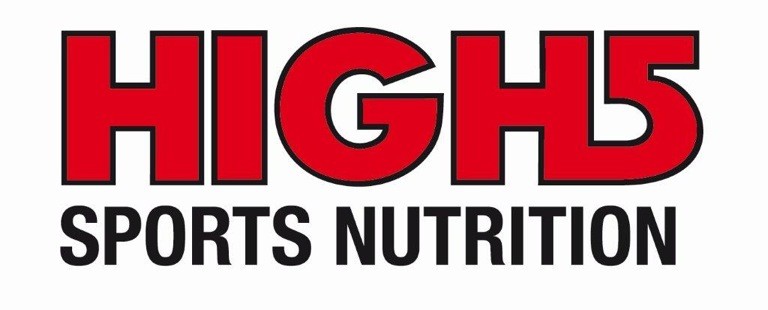
High 5 Nutrition – One of the key parts of the process to success for any coach, team or athlete! Natural, science backed, simple, tasty and effective products. What more could you ask for, 4:1 mix for DH days, Zero Tabs for any ride or session and IsoGel + for clever pre stage “sharpness” at Enduro races.
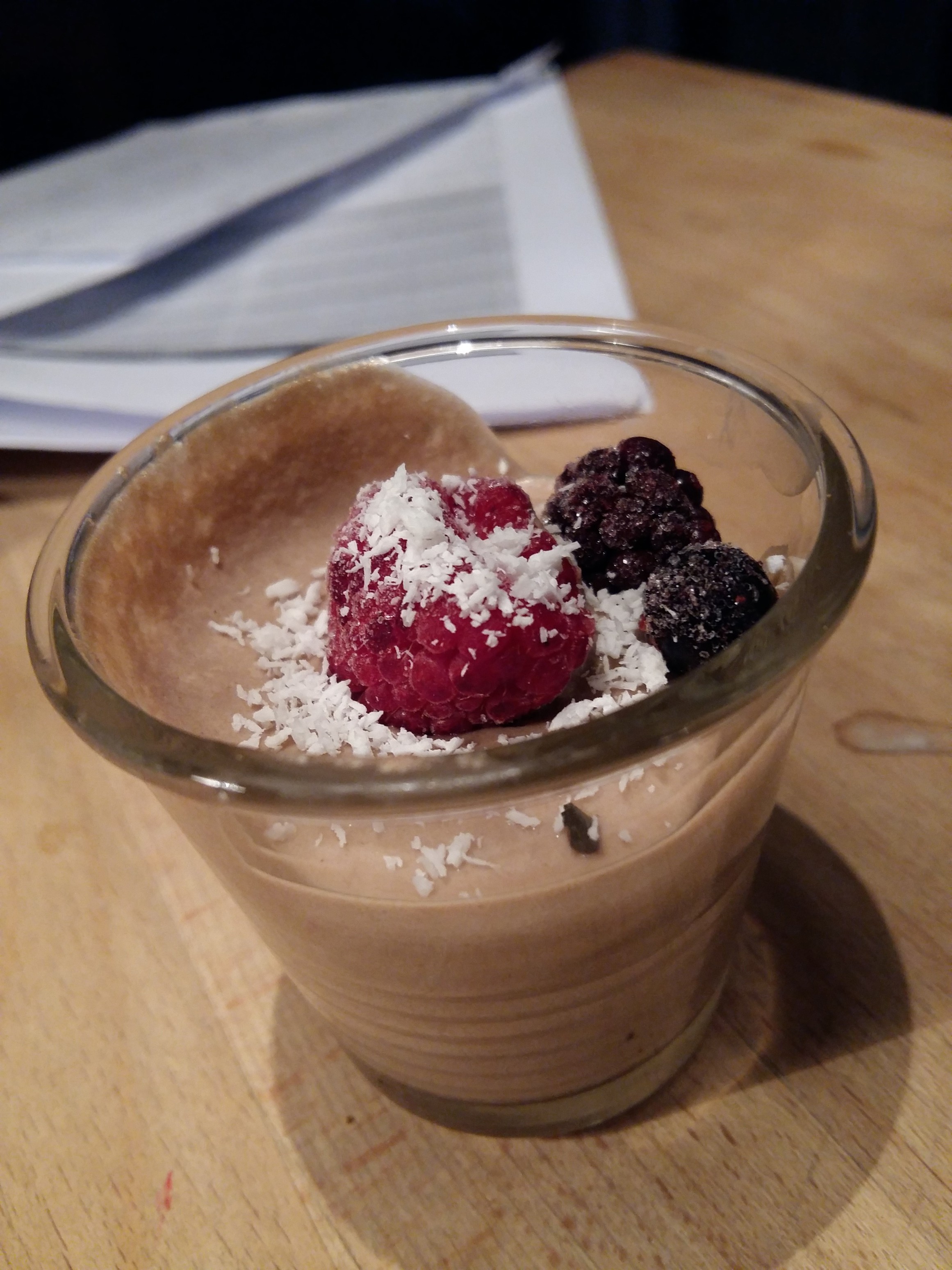
Tough day in the saddle or better yet standing on the pedals slappin’ turns and berms? – Feeling like a treat straight after riding or something sweet after your main meal but don’t want to stop the Gainzzz (yes 3 Z’s) train?
Well here’s the simplest tastiest treat going and “functional” to boot.
Chocolate Mousse that helps you Recover! – Voodoo magic surely!?

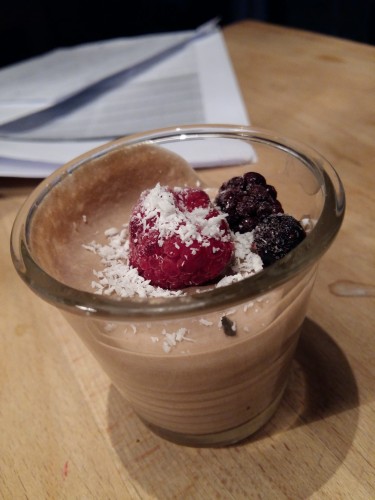
200g of Fromage Frais – (why Fromage Frais – because it’s “alive” with cultures and a nutritional
powerhouse)
40g of High 5 Recovery Protein Powder (I used chocolate flavour)
1 Egg White – whisked
Optional Vanilla Essence to taste
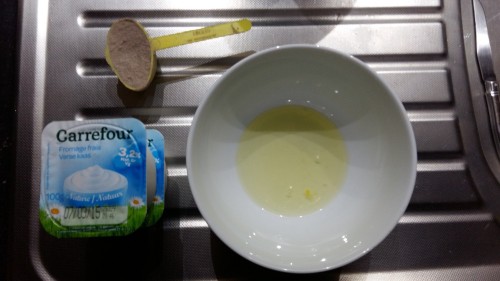
1. Whisk the Egg White so she’s “peaky”!
2. In a separate bowl mix together your two scoops (more if you’ve had a wild day) of High5 RP
3. Slowly combine your egg whites with your Fromage Frais/RP mix and boooom you’re done
Optional extras: Add some vanilla essence, dark chocolate flakes/shavings, coconut pieces or top with frozen or fresh berries! All depends on your nutritional needs and energy expenditure for the day not to mention your current goals!
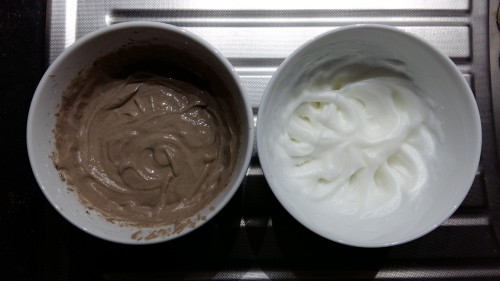
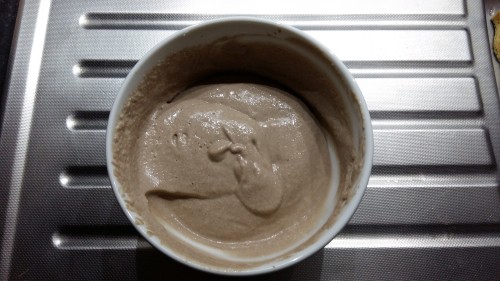
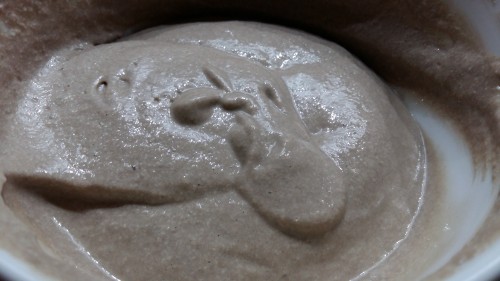
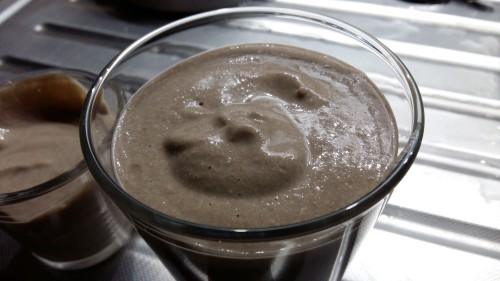

Here’s the exact nutritional breakdown of a 100g Serving! – Multiple by 2 if you eat the whole lot in one – easy do!
http://point1athletic.com/wp-content/uploads/2015/02/High5-RP-Chocolate-Mousse-2.pdf
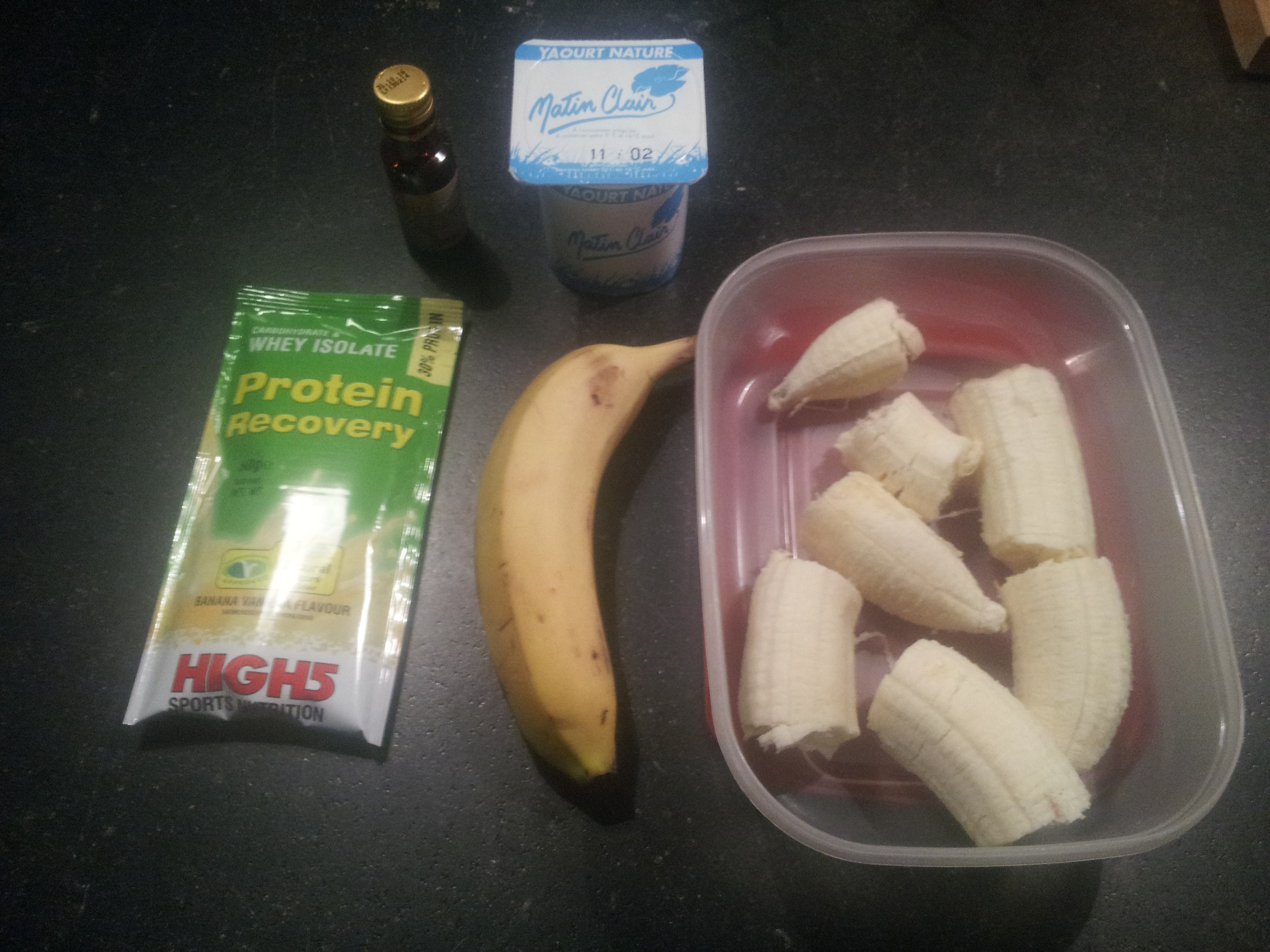
Sounds to good to be true I suppose – Ice-Cream that helps you recover from hard training and racing?
Well fear not sometimes in life the “to good” stuff comes true! This is about the simplest Point1 recipe yet and kicks off a series of blogs I’ll be doing using the awesome products from the folks at High 5.

So here it goes
1 Sachet of High 5 Banana Vanilla Flavour Protein Recovery Powder
2-3 Medium, ripe, Bananas
1 pot of Natural Yogurt – (I used a full fat one, makes nutritional “density” sense!)
1 tsp of Vanilla Essence
Small pinch of sea-salt
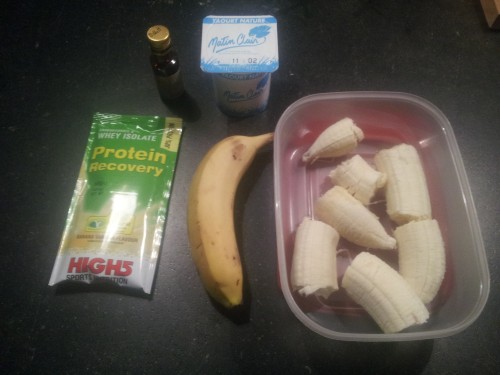
Place all ingredients in a bowl – I used a Tupperware with lid so I could transfer direct to freezer, no waste, no messing!
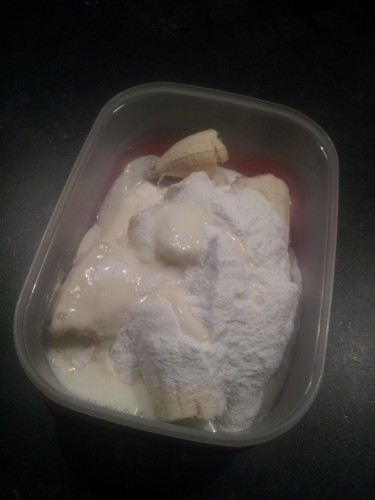
Mix with a blender until smooth
Freeze for a few hours – DONE!
Oh and make sure to enjoy it with some dark chocolate shavings, dried coconut flakes or just on it’s own! I’ll update this post ASAP with the full nutritional breakdown from www.nutritics.com once they add the High5 Protein Recovery Powder to their database.
Like always this recipe can be modified as needed and to be honest using the Chocolate flavour powder with raspberries tastes even better!
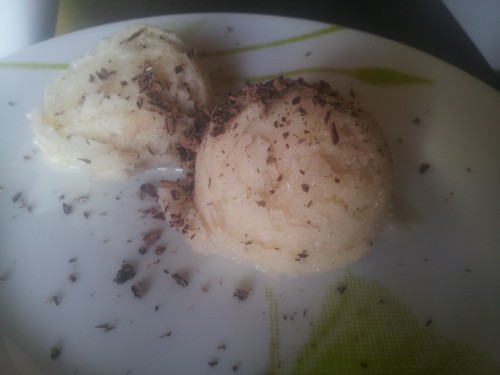
Enjoy.
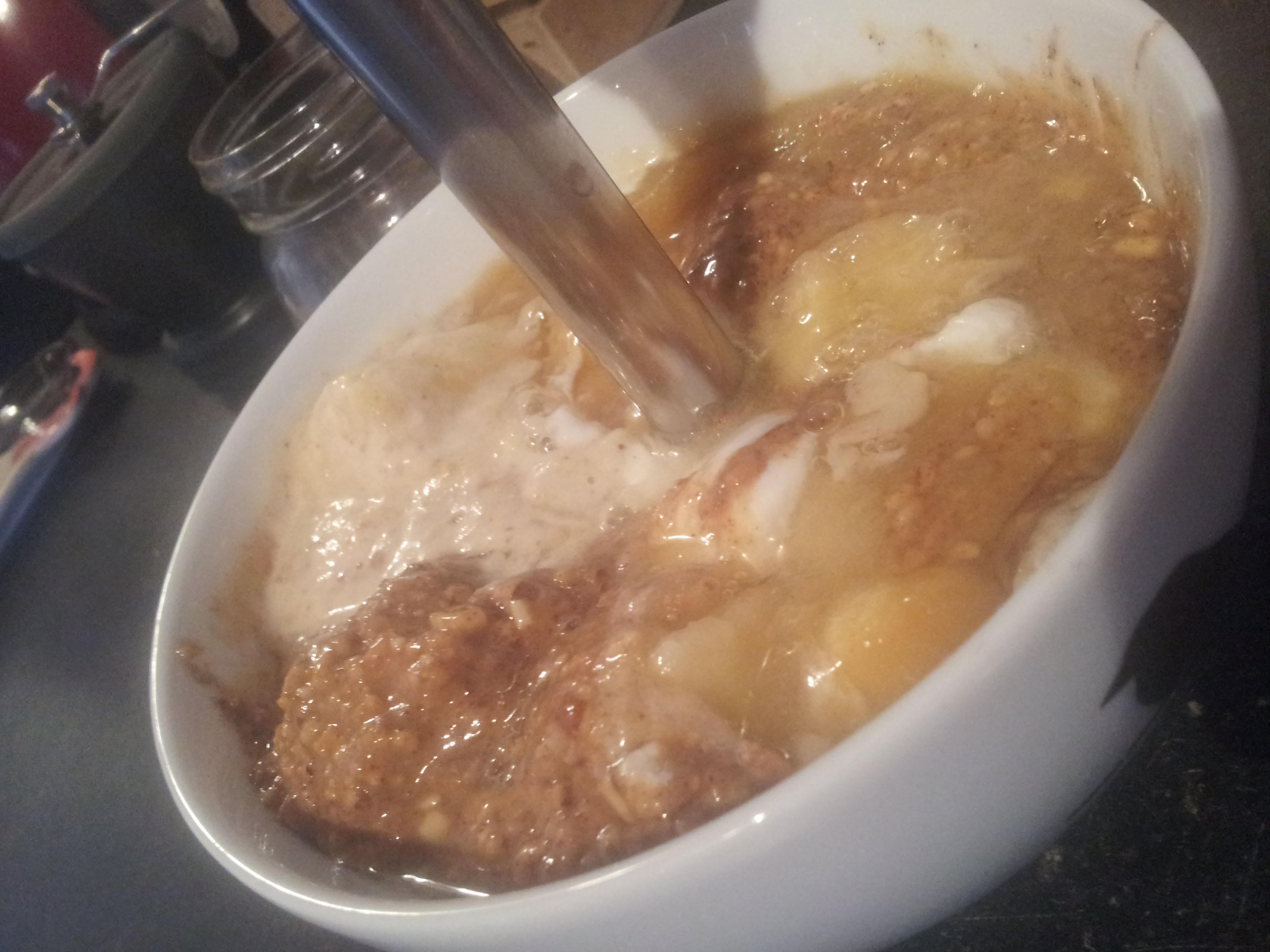
Go anywhere do anything snacking! A cookie type thing that does it all! Breakfast, snacks, riding, racing…..bulking for those #gainzzz
Pictures, nutritional breakdown and “how-to” below!
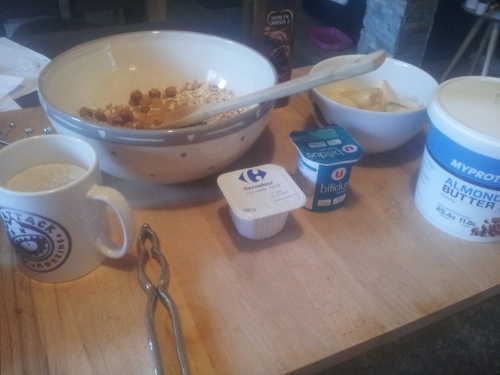
Mix all your dry ingredients in a big bowl – well! You can substitute the flour types, seeds and nuts for whatever you fancy! But the oats are crucial to hold these “cookies” together and give them there texture.
In a separate bowl mix all the wet ingredients and Almond or peanut butter! If you want a sugary cookie add in 1 to 4 Tbs of honey. I wouldn’t recommend the added honey for a breakfast or snack cookie, but it would be perfect if these were to be used as a snack on a very long ride or training session!
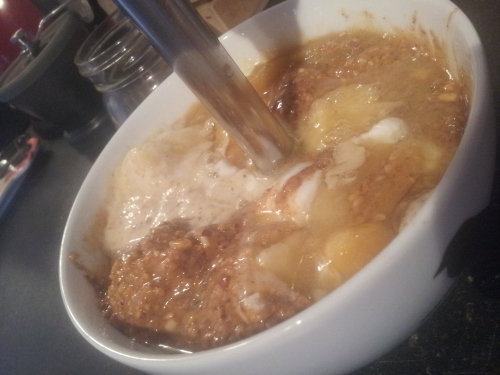
Combine wet and dry ingredients until you get a nice consistent batter!
Plonk some dollops of batter onto parchment paper on your oven tray and bake at 180 c in a fan oven for about 15 mins!
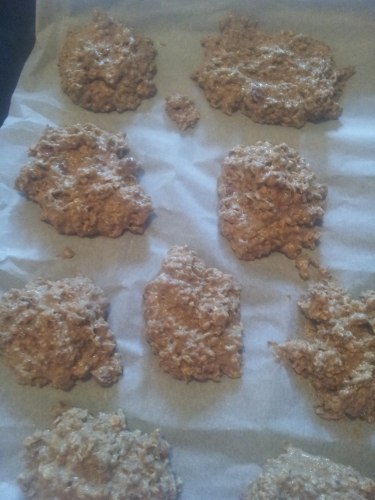
And by all means sprinkle whatever seeds/nuts you want on top or add cacao and some 75% + dark chocolate if you want some chocolate in your life!
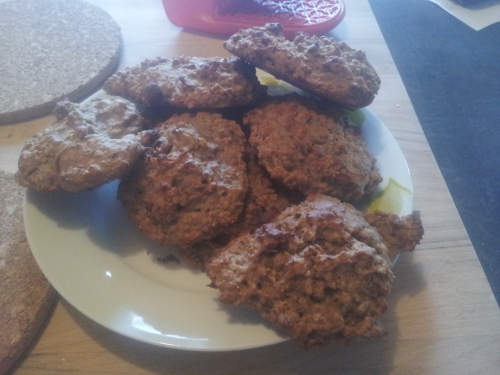
These “All in 1” cookies are packed with vitamins, minerals and fibre, so they fill you up and take some time to digest, so certainly not a pre-ride snack, but are perfect as part of a breakfast 2 hrs before training or riding or after the 3 hr mark on an epic trail ride or race!
As you can see in the 100g nutritional breakdown they have a pretty perfect ratio of fats to carbohydrate and protein to form a great snack or part of a meal!
Enjoy
http://point1athletic.com/wp-content/uploads/2014/11/Point1-Breakfast-in-1.pdf
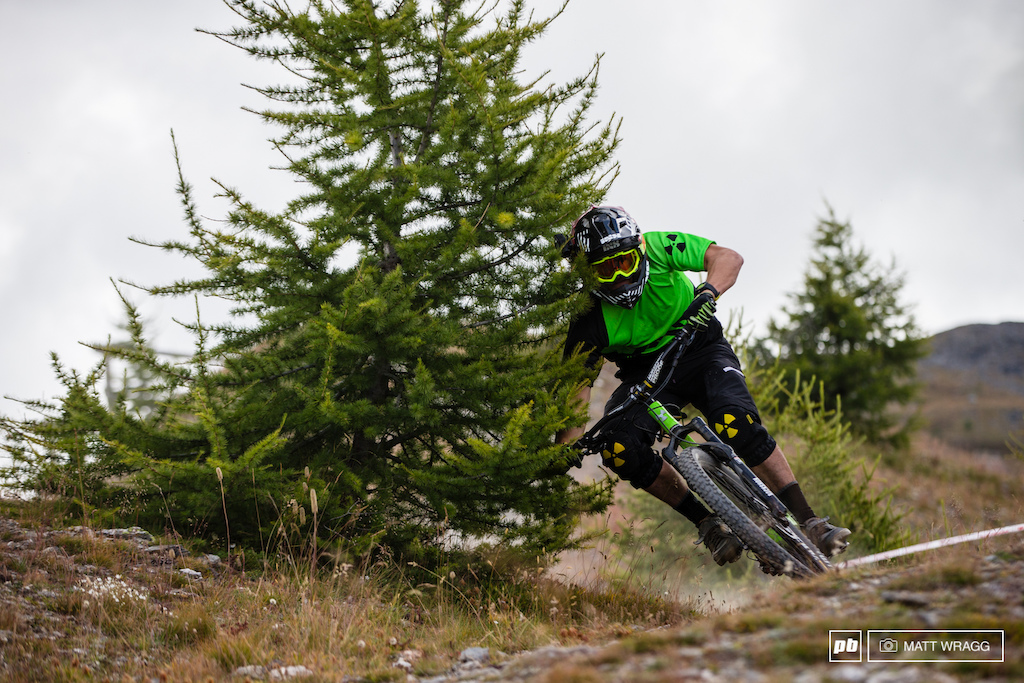
Busy times at Point1 HQ, off-season training has kicked of again for most athletes, so fine-tuning, getting back into the training mindset, managing the process and implementing past lessons and experiences learned!
Here’s a pretty simple but deadly effective exercise to add to your strength training arsenal! Borrowed from a well know strength coach called Dean Somerset. I couldn’t help but think of the myriad of benefits for the mountain biker.
It’s an All in One bang for your buck type move. Torso Anti-Flexion, Hip stability and mobility, scapular and general shoulder stability, anti lateral flexion and a unilateral hip extension emphasis so crucial for MTBers. Not to mention the overall neuro-muscular, intra and inter-muscular co-ordination.
Load it up with dumbbells or kettle-bells (bottoms up KB would be challenge). Use at the end of session as part of a core circuit or with lighter loads early in a session as an “activation”m exercise, to get all systems trucking.
Enjoy and let me know how it goes for you guys and girls!

“Having made such huge improvements to every aspect of my racing in only one year of working with Chris, I can’t wait to see how much further we can go together. He is always striving to learn and improve, this, along with his work ethic means I couldn’t think of anyone better to help me achieve my goals. I’ve enjoyed this years training more than any year before and the results show that. He understands that a happy athlete is a successful one and that everyone is different!”

It’s early/mid October. Your race/riding season if you live in the Northern Hemisphere is pretty much over and doesn’t kick off again for a good few months…
So how did things go? Goals achieved? New benchmarks set, personal bests on Strava, race wins, got through a week in the alps without arm-pump or alcohol poisoning?
Taking some time to reflect on the riding season just gone, review your approaches and execution of training, riding, planning and nutrition and asking yourself or your coach some tough questions is a must if you want to plan better, improve and grow for 2015!
Do the worthwhile things better, avoid repeating the same mistakes as last year and generally just improve the whole process. So how do you go about doing it? Well I’m gonna give you a few “top-tips” below and hopefully some ideas to start the mental juices flowing so you too can review your season just gone!
Sit down or stand up…pen and paper, voice recorder or chalk board! It doesn’t really matter. Just answer, honestly, some key questions about your race season and preparation period (off-season) just gone. Some examples to get the ball rolling!
– Did I achieve my goals?
– What was my best result?
– What gave me the most satisfaction this year?
– Biggest disappointment and why?
– What training did I enjoy the most/least?
– How was my mental approach to riding and racing? Nervous, relaxed, focused etc…?
– Did my coach listen to my needs, questions, demands etc…?
– What physical qualities did I lack during riding racing the most?
– Did I complete all training as prescribed most of the time?
– Did I diligently fill in training diaries?
– Did you enjoy training/riding/racing/the process?**
– Was I too sore from training to race well?
– How was my technique, freshness and FGF during the critical race periods?
The list of meaningful questions is endless, you could ask yourself or work together with your coach to ask all the key questions to cover all areas of performance planning. If you have a coach and a “post-season” review is not something they do then maybe there’s something up! Because it really is an invaluable process.
**that’s a very important question right there
Keeping track of performance parameters is something both athlete and coach should do! It’s a team/joint effort. Interpreting the data and implementing change is up to the well educated athlete that coaches themselves or a coach if they employ a coach. But if there is no data to interpret then there are no changes to be made!
Same goes with a post-season review. Reviewing all the data you canto see how things really panned out is a very constructive way to make changes for the next year. So where would we get this data from? Well hopefully from a variety of sources, but valid reliable and measurable ones…because remember if you can’t measure it it’s awfully hard to change it.
First up is a training log or Training Tracker as we like to call it here at Point1 – It’s simple way to keep track of progress, see patterns in adaptation to training and recovery loads but also a great way to keep athlete and coach honest with a mix of objective and subjective scores and data! What does it provide post season, well it provides a deeper insight into each training week, block or period. You can then use it lined up against other data, results or memories to join some dots and see what did and didn’t work right from week 1 of the Off-Season to the final day of the “In-Season”.
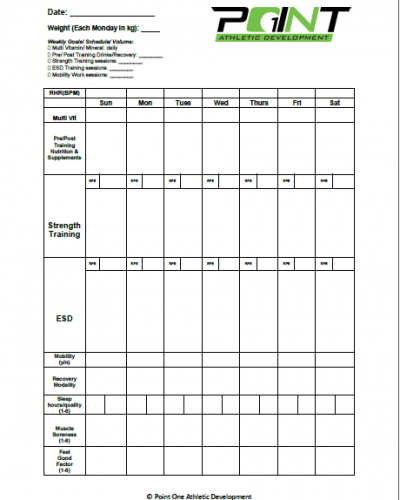
Like mentioned above reviewing data from the year gone past can come from many sources, the more the merrier aslong as you know what to look for and where to make conclusions from! Other great sources of data would be;
HR data from training sessions – session totals, Trimp scores, HRrecovery (HRr), resting HR’s pre/post session etc…
Power Metre Data – average powers, peaks, normalised powers over rides or weeks of training, power profiles of your event, best events, worst events, fatigue, freshness, cardiac drift (need HR data for that) and 1,000 other things!
Race results and split times – www.rootsandrain.com is every MTB races best friend; % time behind winner, faster at split 1/2 or 3, lap times, stage times – faster early on, late on, need to work on fatigue, energy management, efficiency or mental arousal etc…
Strava or other such nightmares – comparing times, climbs and duration from many years, rides, weeks or months. Overall “on the bike volume”.
Gym based results – weights lifted, exercises selected, injury prevention or pre-hab volumes, specific testing, transfer of training.
Video analysis – races, training, go-pro etc…
It’s a pretty comprehensive list really, so many ways to look back and reflect on your work done and results acheived. Did they match your goals, what was good, what needs to be changed?
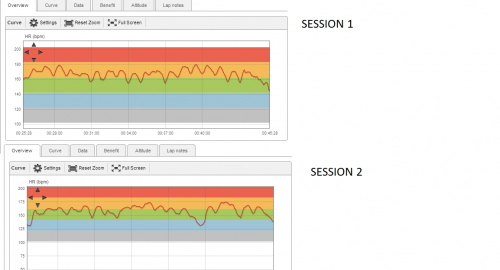
I always find it funny when people say, “ohh you don’t need a coach during the season”; “it’s off-season that counts”, “just ride your bike” etc… Well put very simply, 6 weeks of just riding your bike with no real plan can very easily un-do much of your hard work during the off-season.
So with that in mind an excellent area to “review” post-season is how your training loads and planning where during the racing or riding heaviest part of the year!
Did you train, maintain or just ride your brains out? What worked and what didn’t (training tracker is very handy here). How was your balance of fitness, freshness and fatigue?
Honestly to think that you’ll get away with just 6 months+ of racing with no plan and come out “on-top” is crazy! Some athletes come in to their race or riding season hot and fat and burn out, others come in cold and build some sort of specific fitness on the bike slowly, others get it all just right and last the whole season of racing or riding in pretty much tip-top shape!
What you should be looking to review from your “in-season” planning is individual and sport/discipline specific but here are some good places to start.
1) Training load, type, timing and volumes: The idea of Residual Effects comes mainly from “Block Periodisation” made popular by coaches like Issurin, Verkhoshansky and Bondarchuk. Using the “half-life” of the key physical qualities of your discipline to decide when and what to train and in what volumes is a great place to start for your in-season planning and like-wise a perfect place to start reviewing your in-season plan.
Did you leave weeks and weeks without training your Max Strength or Speed? How important are these qualities to the outcome of your event? How often does your tech training or riding target certain qualities, if it does is the load sufficient to maintain or improve that physical quality? I’ll let the Table below explain the rest.
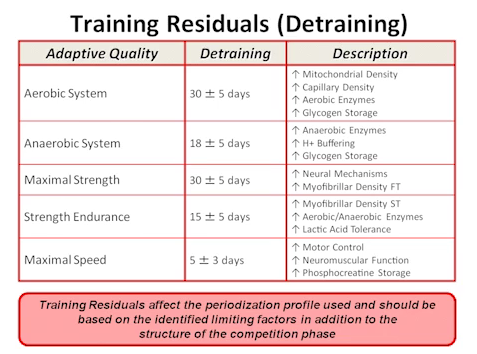
2) Race week! The one time when many things go “tits-up” for racers. What can you improve on for next year? The good, bad and VERY UGLY? The questions you need to ask?
– What training did I do mid-week?
– Did I recover fully from last weekends riding/racing?
– What active recovery modalities did I use? Did they work?
– Di I reduce or maintain training volumes in week of race? Why?
– Did I come into race day fresh both mentally and physically?
– Was there enough or too much physical, technical or tactical training during the week?
– What was my mental state like during the week, race, weekend etc…?

3)Recovery – What strategies did you use for recovery? Why? When? What worked, what didn’t? Too much of a good thing is always a bad thing. So planning your recovery in-season is key and as such reflecting on what worked pos-season will help you make far better decisions for next year.
The key is to promote recovery both mentally and physically but not to reduce or blunt our windows of opportunity to train and adapt.
Fitness – Fatigue + Freshness = Form
Remember that the mental state is just as important as the physical one, so plan recovery accordingly!
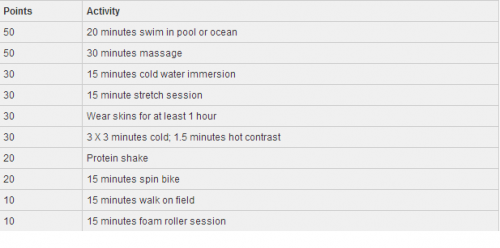
So there you have it three key areas to review after your riding or racing season. There are certainly other areas and avenues to pursue, but the above is a good start.
Feel free to add your own thoughts and ideas in the comments below!
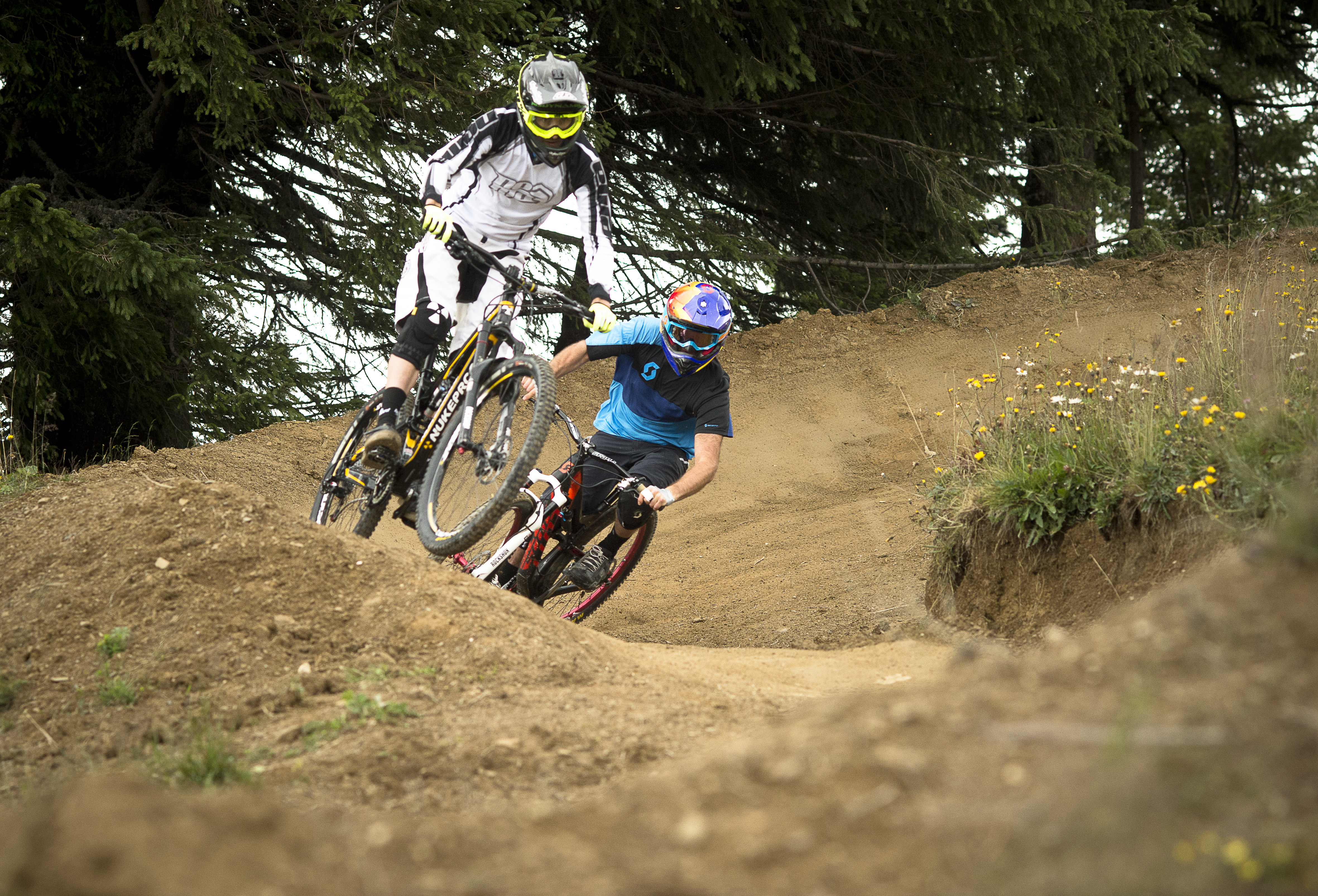
Ahh King TUT! Sounds awful right? TUT = Time Under Tension. King, because this is the King way to add some time under tension to your strength training sessions!
The RFESS is a Rear Foot Elevated Split Squat what some people call the Bulgarian Split Squat. One of the ultimate lower body exercises and a move that most certainly should be in your arsenal. Simply one leg behind you on a bench, chair or whatever is handy! The video will explain the rest.
The bang for buck aspect of the RFESS is nearly unmatched. Single leg extension, good glute drive is required, supreme control of the stability of the hips (glute medius, adductors, abductors) and torso/core (antiflexion, anti later-flexion), balance, proprioception (especially when loaded asymmetrically), eccentric load on the hamstrings, ankle stability and mobility are challenged and you even get a little hip flexor stretch for good measure.
It also lets you see pretty quickly if you have any strength deficits between legs.
Further more seen as you can literally go wild with different loading parameters and combos, the additional and/or specific challenges you can induce for the torso, hips, and hip extensors in terms of strength, power, stability and mobility are near endless!
It’s a pretty straight forward move to learn and is perfect for people with knee pain as it usually doesn’t cause much issues. I would recommend though that you follow a simple progression before even thinking about even body-weight RFESS’.
Normally for Point1 athletes it goes – Split Squat – Body-weight squats – reverse lunge – RFESS. Getting yourself comfortably and stability into the lowest position of the RFESS is about a good balance of mobility and stability, so those need to be well taken care of before you start!
Ahh Time under tension. Creating and managing mechanical forces in muscle is, well in it’s essence, “strength”. Changing the speed with which you lift weight through the full or partial ranges of concentric, isometric and eccentric contractions manipulates how long the muscles have to be “working” i.e. receiving neurological info, using ATP as energy, sliding actin over myosin etc…
Increasing TUT is primarily a technique used by bodybuilders to induce hypertrophy, that means gain in size of muscle or as the kids like to say these days GAINNNNZZZZZZZ!
It’s been shown in laboratory setting though that increasing TUT to be an effective way to increase protein synthesis in the muscles (Link)! But clearly has it’s limitations for the mountain-biker as we want fast, powerful contractions the majority of the time in training!
The method in the vid below is a combo of decreasing the speed of the eccentric/lowering phase of the RFESS, pausing for 1 then bringing your self back up into a half rep (halfway to the top of the movement) then back to the bottom and finally EXPLODE to the start position.
That EXPLODE is very important as being explosive through extension of the knee and hip joint is very important for the MTBer. The other portions of the lift challenge single leg eccentric strength and also go a long way to increasing your muscular endurance through partial and loaded contractions -something that happens very often on the bike as you hop, pop, pump and push your way over a variety of terrain, especially when things get steep or have large g-outs etc…
The final piece of the puzzle is the loading! In this vid i used what is called the “goblet squat” loading, holding a heavy Dumbbell in the goblet position, is a great “self-limiting” way to load as it really challenges the anterior (front) core while safely loading the legs!
Start smart – be confident but don’t be afraid to be humbled by the RFESS and the King TUT method!
P.S. the “half rep” idea was 100% stolen from Ben Bruno!
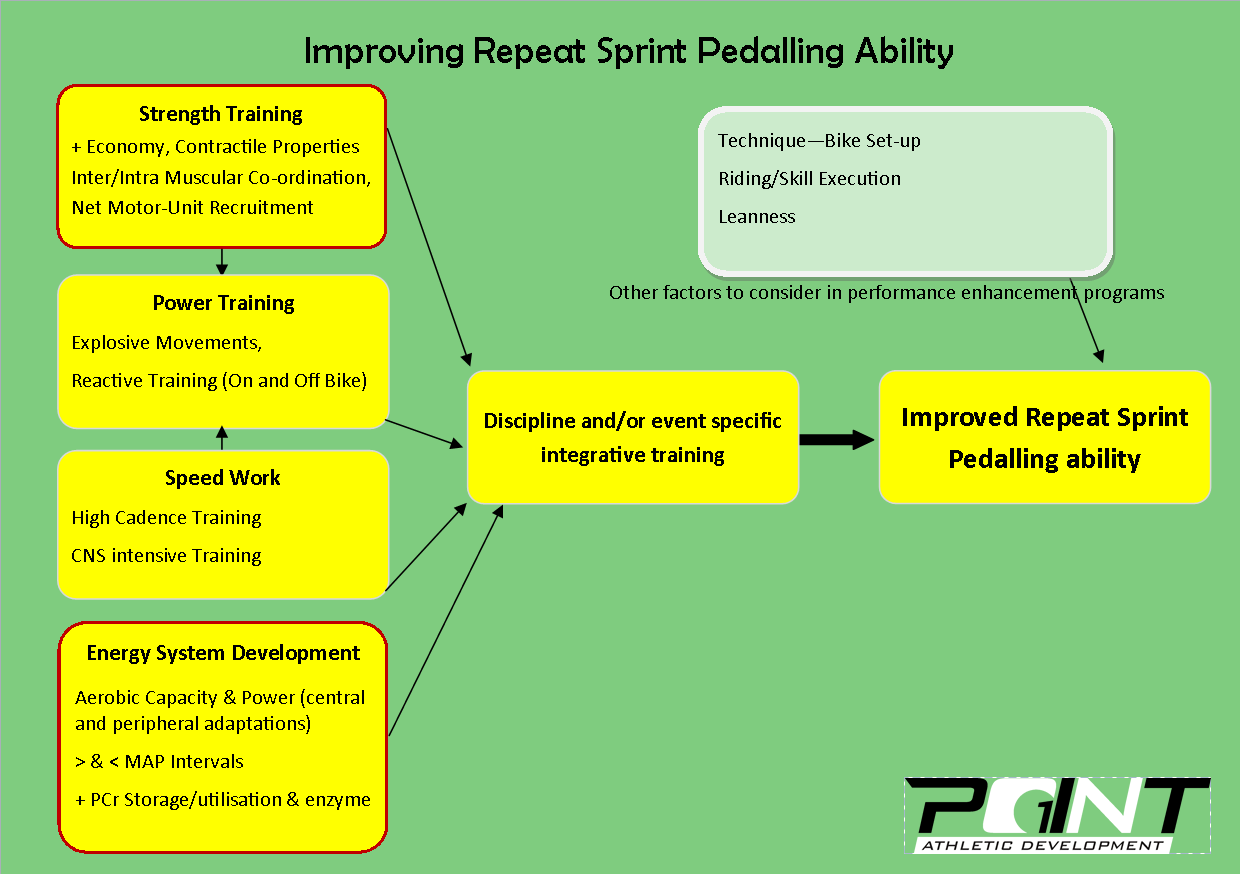
How often does one make full revolutions of the cranks in a DH race and during practice? Well that depends; course type, terrain, climatic and environmental conditions, gear ratios etc…
What is a certainty though is that pedaling during DH racing is intermittent i.e. “occurring at irregular intervals; not continuous or steady”. While we ride DH on a bicycle, two wheels, cranks, chain etc… unlike our roadie or XC cousins, quite often the main means of locomotion for the DH athlete/rider isn’t application of force on the pedals but gravity! Having said that tough, what is also certain is that pedaling can be a determinant of performance and results.
So it goes without saying that understanding the energetics (how energy is supplied) for these intermittent repeat sprint bouts is quite important when looking to prepare yourself to meet the varied physical demands of DH. Interestingly repeat sprint ability is something that in the last decade has been study a great deal in the laboratory by many well respected sports scientists. Even more interesting is that many of the Repeat sprint Ability (RSA) testing protocols used in these studies mimic the demands of DH specific pedaling dynamics closer than they do the sports they are primarily testing/researching for (field and court sports, soccer, basketball, tennis, ARF, hurling etc…).
Many of the studies used a 6 sec “MAX” sprint interspersed by 24 to 30 sec of stationary/passive recovery. So if we look at a power metre graph from a fairly typical DH run we can see the similarities.

Similarities there may be but on the other hand there are some key differences and this is where we will start our wee journey into hopefully understanding the Repeat Sprint Pedaling Demands of DH a little bit better and then go on to talk about the key areas we need to train to improve our RSPA – Repeat Sprint-Pedaling Ability!
As a DHer you’re looking for two key things to ensure optimal pedaling performance. 1)Achieving a high peak power output, 2)minimising the reduction in this peak power output over repeated sprints. In other words reducing your fatigueability over many repeat efforts on the pedals in one run. In short this IS Repeat Sprint Pedaling Ability.
The exact causes of fatigue during repeat sprints is the topic of hot debate and much research but having a clear grasp of the most likely and/or proven factors in RS fatigue is the first step in understanding how to train effectively to increase your potential to create repeat power!
Before we get to a point where we can understand the factors that create fatigue and limit RSPA you’ve got to understand the relative contributions of each one of our three energy systems to “all-out” riding during a DH run.
The 3 energy systems are distinct but closely integrated, they operate together in a sequential but overlapping manner to supply working muscle with the energy it demands. The energy systems are split into 2 categories. Aerobic (with oxygen) and Anaerobic (without oxygen). The Anaerobic systems are subdivided into ATP-PCr and Anaerobic Glycolytic (the infamous anaerobic lactic system).
The ATP – PCr system is the most direct supplier of energy to muscle. As a tiny amount of stored ATP (our energy currency) exists in skeletal muscle along side stores of the high energy phosphate Phosphocreatine (PCr), between the instant utilisation of ATP and the very fast breakdown of PCr large amounts of energy can be supplied to working muscle very quickly for a duration of up to 8 seconds give or take! This is why Sprint 1 of a DH race is the most powerful. Maximum stores of PCr, minimum fatigue, maximum neural drive!
The second anaerobic system is the glycolytic system, this is simply the break down of stored carbohydrate (glycogen) in the muscles with no oxygen. This is a fast supplier of energy as the reactions take place in the site where movement will be created, but it has it’s limitations as it creates many by-products that need to be shuttled away from the working muscles for movement to continue. The “lactic” system can provide energy for up to 75 secs but really beyond the 35 sec mark our next energy system, the Aerobic system, really kicks in.
Finally the aerobic system breaks down stores of fat and carbohydrate to produce ATP (our energy currency), this happens in the muscle but not directly at thesite of movement, so it’s not quite as “fast”. But if we are correctly warmed up then aerobic metabolism produces a large percentage of our energy for any “all-out” activity beyond the 75sec mark! And remember the average DH World Cup run is 225 to 275sec in duration.
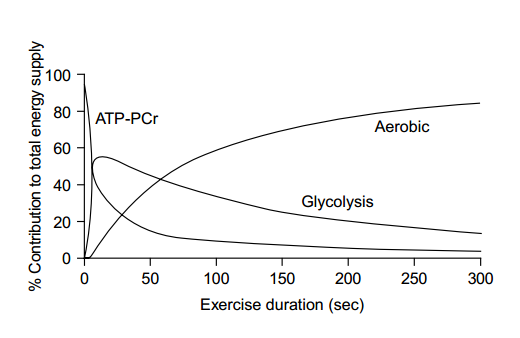
Right so now that we have the dull stuff out of the way let’s get down to business. AS we could see in the power trace graph further up DH often requires a hard initial sprint out of the start gate, followed by repeat “all-out” efforts on the pedals at irregular intervals. You can have anything from 3-5 secs right up to minutes between pedaling efforts (ala Val di Sole). Usually though it’s pedaling bouts of 3-6 secs with gaps between of 10 – 25secs.
So most of the very good research out there points to 2 things, firstly the initial sprint performance is very important and that this initial sprint of 3-6 sec is fueled mainly by the ATP-PCr system. With gaps of 10-25sec between repeat efforts on the pedals it is again the ATP-PCr system that fuels the efforts but onl if your AEROBIC system is “fit” enough to replenishes your PCr stores, as it is solely the Aerobic system that replenishes your stocks of PCr! Finally once you get out to the 225 sec + mark in time it looks like the fittest athletes with the best RSPA rely heavily on the aerobic system to fuel these final sprints with the glycolytic system contributing only ¬8%!
Pie chart below showing what I’m talking about from the great review on the subject by Girard et al 2011 Sports Med 2011; 41 (8): 673-694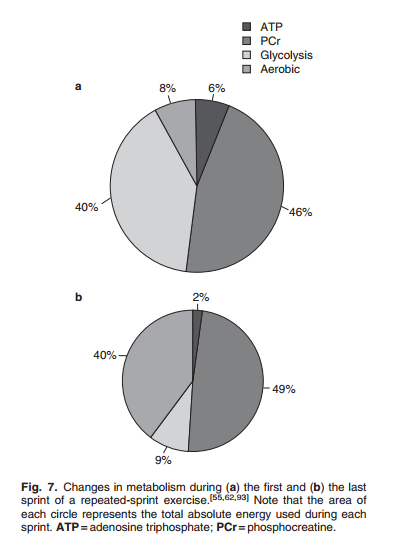
So things seem clear for now…right? The above test protocol was 10 X 6 sec sprints with 30 sec recovery between them, so not to dissimilar to the demands of DH pedaling….right? Well maybe it’s not that simple! The 30 sec recovery between the 6 sec effort sin the above study was total rest, stationary chill-out until your next 6 sec bout and that’s where the similarities with DH end!
Because as we all know between sprints on your DH bike there’s usually a whole lot happening, riding! Yep the main bulk of our performance and most certainly the main determinant of performance is actually riding your bike and riding it FAST. So how does that effect your RSPA? Well it’s something that has never been directly studied, but as a coach for many DH athletes it’s something I can certainly make some educated assumptions about!
Well basically you hang off the steed at a million clicks and try hit your lines? Well not quite but the demands of DH are pretty varied and as such are pretty complete. The basic goal is choosing the best, fastest line from A to B and executing the required techniques at the required time to make your lines and carry the required speed to have the fastest time! Simple!
But the energy demanded by riding as fast as possible from A to B is substantial. Especially when the terrain is rough, steep, fast and gnarly. The mix of isometric, eccentric and concentric muscular contractions, the fine and gross motor skills that executing a huge range of techniques requires is hugely energy hungry. Maintaining posture, exploding off jumps, hitting and skipping over huge holes, railing berms, climbing off-cambers and shredding turns all require energy to be produced by all 3 energy systems in unison by in time and intensity dependent amounts.
No need to complicate the discussion really. The harder you ride the more intramuscular energy stores you’ll burn and the less likely you are to have re-synthesized even partial amounts of PCr for pedaling after the first sprint. But, the more skillful you are, the better your technique is and the less energy you expend while riding at optimal pace the more likely it is that you’ll still have adequate stores of ATP, PCr and muscle glycogen to fuel very rapid metabolic reactions to power short sprint efforts. Likewise as the muscles we use to maintain riding posture and execute techniques are not used in exactly the same way and with the same inter and intra-muscular co-ordination as during pedaling then we can assume that the more aerobically fit you are the more likely you are to re-synthesize stores of PCr that could be used for explosive pedaling actions.
It’s an interesting topic and something that warrants good research, we know that steep natural tracks are more physically demanding in their riding induced loads (Hurst, Swaern et.al 2013) than “bike-park” style tracks, but often steep natural tracks require little pedaling and certainly show few of the hallmarks of the demands of RSPA.
Course duration too will have a large effect on inter-relationship of the three energy systems and how your body chooses to supply the required metabolic energy to make the muscles contract in sequence for pedaling.
Alot of these “issues” presented have some pretty common sense, evidence backed answers. As we’ll see below.
How to train for supreme RSPA performance? First identify the limiting factors, understand how to improve them then integrate the training.
One of my favourite quotes is “you can’t maintain what you don’t have”, basically looking to improve your sprint capacity or repeat sprint ability is pretty worthless if you can’t sprint in the first place. So training the mechanical factors like strength then power, intra muscular co-ordination, neural drive, fibre type, motor-unit recruitment etc… is key! These can be trained in the gym and on the bike. With the gym offering many benefits the bike does not.
Once mechanical power production is developed it needs to be supported by the metabolic processes, the energy systems and other factors such as enzyme activation and energy stores.
Training the aerobic system to it’s optimal state so re-synthesis of PCr is improved (Bishop, Girard et.al 2011), one study carried out in Norway ( Balsom et.al; Acta Physiol Scand 1994) showed large (11%+) improvements in RSA (again 10 X 6sec sprints) when participants where administered EPO, thus improving the oxygen carrying capacity of their blood and subsequently aerobic “fitness”. Like-wise similar RSA tests where participants have actively restricted blood flow (ischemia) to the legs their was a marked reduction in RSA performance over 10 sprints due to the inability of the aerobic system to re-synthesis PCr stores and actively provide energy for muscular contraction in it’s own right.
Starting training session in a fully fueled state so training “impulse” and signaling for a sprint session is at it’s highest.
Training to resist, buffer or better deal with metabolic by-products of high intensity exercise created by the Anaerobic Glycolytic system should also be considered, especially for mixed tracks that require a variety of riding styles or techniques and pedaling. The inorganic phosphates and general acidosis created by anaerobic glycolytic metabolism play havoc within muscle tissue and reduce the “excitability” of the muscles, reducing their contractile function and intra-muscular co-ordination, one of the main reasons why increases in fatigue causes crashes, falls, poor performance or that feeling of being a complete tool on the bike!
Improving your technique and skill on the bike will possibly lead to less energy expended for the same speed A to B and as such more potential energy available to fuel sprint pedaling performances and possibly more window for your aerobic system to re-synthesis PCr in the “pedaling muscles”.
Integrating any training you do to actually “work” on your race bike under conditions characteristic of the sport is also a crucial area often over-looked by many.
The importance of training the anaerobic glycolytic pathways of energy production for pedaling performance for DH is highly debatable. There certainly are specific courses (PMB, Canberra) where this type of training could be beneficial but much of the anaerobic fueled demands in DH are not pedaling induced, but riding induced.
Much of the data, studies and evidence presented here comes from repeat pedaling tests, but designed by scientist looking into the demands of field and court based sports not MTB. So as such common-sense and experience based critical analysis should be applied to everything you read.
Are the pedaling bouts in DH repeat, sporadic and intermittent in nature? YES. Is each course equal? No. Do the demands on energy supply and change with the activity profile and riding dynamics of each individual course…absolutely! What does all that mean for the DHer looking to improve their performance on the pedals? Get strong, be fluid on the bike, relax, train all 3 energy systems but not all the time nor in equal amounts.
Every one has their own strengths and weaknesses. But with the huge variety in courses, pedaling demands and the ever changing environment (weather, altitude, courses etc..) you face as a DHer having a well tuned aerobic system and a big strength foundation will serve you very well. Couple that with good mobility, flexibility, adequate nutrition and characteristic training and you’ll be well on your way to pedaling well on your DH bike.
Below I’ve included a chart covering the main ways you can improve your RSPA. adapted from the fantastic work of Mladen Jovanovic @ www.complementarytraining.com
We could talk training methodology, influence of hostile environments (altitude) on RSPA, best practice during different stages of development, pedal type, tyre type, wind resistance etc… for days on end, so feel free to ask questions or create some discussion in the comment section.
Just always remember performance and fatigue are multi-factoral, so your training should reflect that. But you can’t train all factors all the time. So a good coach or clever head to plan your progressions in training is needed!
This is part 1 in a two part series, next up will be the pedaling demands of Enduro racing and how best to train for them!
Chris